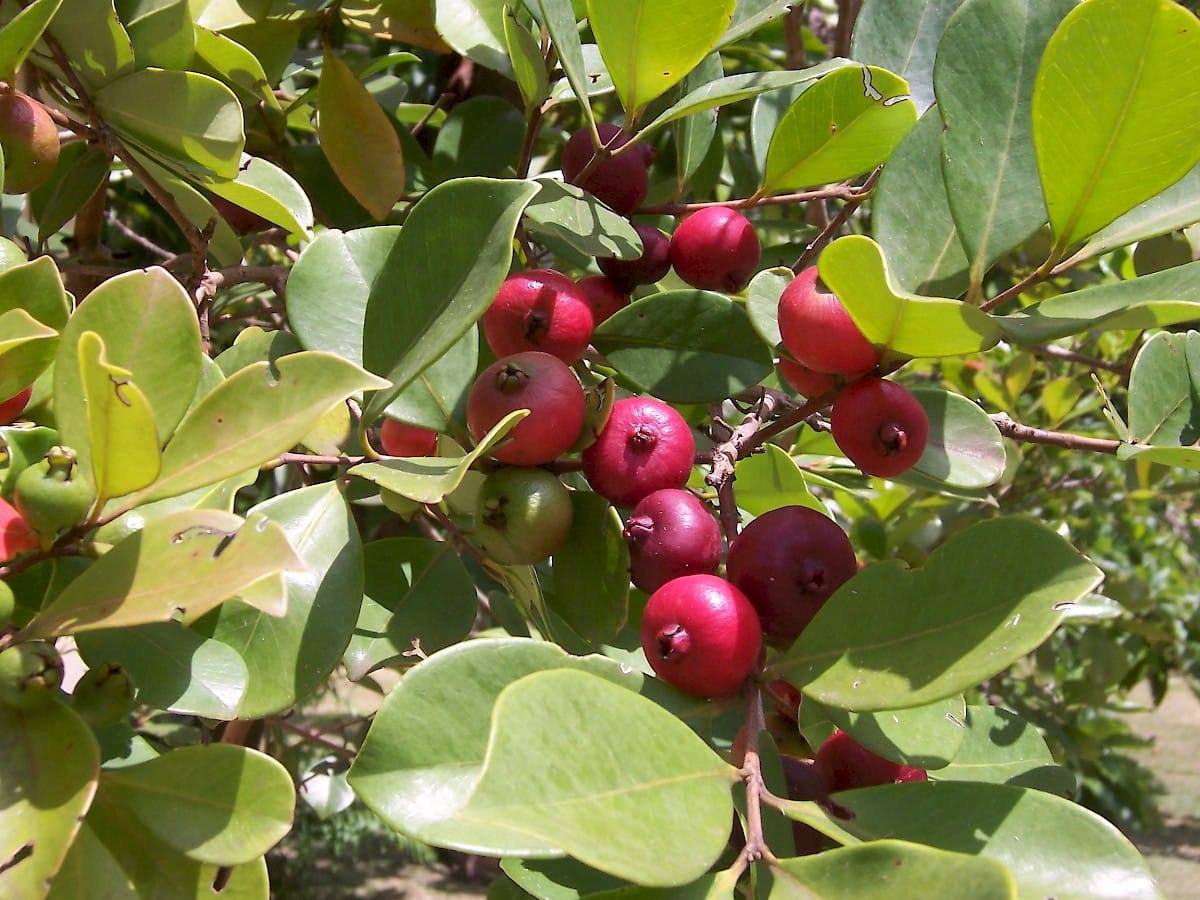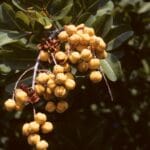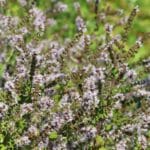Strawberry guava (Psidium cattleianum), with its enticing berries and lush foliage, has intrigued both culinary enthusiasts and ecologists. This article delves into the world of this fascinating plant, exploring its cultivation, diverse uses, and, importantly, its invasive potential. From garden to gourmet, we’ll uncover the secrets of strawberry guava, navigating its complex journey from tropical delicacy to ecological challenge.
Delectable Fruit, Invasive Threat: Understanding Strawberry Guava
Strawberry guava (Psidium cattleianum), also known as cattley guava or cherry guava, offers more than just a sweet treat. This versatile plant, a member of the myrtle family (Myrtaceae), boasts a rich history and a complex ecological story. Let’s explore its multifaceted nature, from cultivation tips to its impact on native ecosystems.
What Does Strawberry Guava Look Like?
Picture a vibrant evergreen shrub, sometimes growing into a small tree, adorned with deep green, glossy leaves and smooth, peeling bark. This is the strawberry guava. While aesthetically pleasing, the true stars are the small, round berries that ripen to a vibrant red or yellow, signaling their delicious sweet-tart flavor.
Growing Your Own Strawberry Guava
If you live in a warm, sunny climate with well-drained soil, cultivating strawberry guava can be a rewarding experience. Propagation from cuttings is often preferred over seeds for faster establishment. While these resilient plants can tolerate some drought, regular watering, particularly during dry spells, promotes healthier growth and a more abundant fruit yield.
From Garden to Table: Enjoying Strawberry Guava
While delightful eaten straight from the bush, strawberry guava’s culinary potential extends far beyond simple snacking. These versatile berries transform into delectable jams, jellies, and juices, or add a tropical twist to desserts. Some prefer removing the skin before eating to enhance the sweetness. Experiment and discover your preferred way to savor this unique fruit.
Cultivating Strawberry Guava in Cooler Climates: A UK Gardener’s Guide
While strawberry guava thrives in tropical climates, UK gardeners can still experience the joy of growing this exotic fruit with a few adjustments. Its adaptability allows it to flourish as a smaller shrub, making it suitable for container growing and indoor cultivation during colder months.
The key to success lies in replicating its native environment as closely as possible. A greenhouse or conservatory offers the ideal setting, providing the warmth and sunlight necessary for optimal growth. For those without such spaces, a sunny, south-facing windowsill supplemented with grow lights can suffice. Well-draining soil and regular watering are essential, along with a monthly feed during the growing season.
Here’s a quick guide to get you started:
- Environment: Greenhouse, conservatory, or a bright, warm indoor space.
- Potting: Use a well-draining potting mix in a suitably sized pot.
- Watering & Feeding: Water regularly, keeping the soil moist but not waterlogged. Feed monthly during spring and summer.
- Light: Provide ample sunlight or supplement with grow lights, especially during winter.
- Overwintering: Bring plants indoors during colder months, reduce watering, and maintain a bright, warm location.
While a bountiful harvest isn’t guaranteed every year in the UK, dedicated care and attention can increase your chances. Some gardeners have even reported success with outdoor cultivation in sheltered microclimates in southern regions, though this method remains less reliable. Ongoing research continues to explore optimal growing conditions in cooler climates, offering hope for future advancements.
The Many Faces of Strawberry Guava: Culinary Delights, Garden Gems, and More
Beyond its delicious fruit, strawberry guava offers a surprising array of uses. From culinary creations to garden enhancements and even potential health benefits, this versatile plant deserves a closer look.
Culinary Adventures
From fresh consumption to gourmet creations, strawberry guava tantalizes the taste buds. Enjoy it straight from the bush, or explore its versatility in jams, jellies, juices, and smoothies. The seeds, when roasted, offer a unique caffeine-free coffee alternative.
A Garden’s Tropical Touch
Strawberry guava enhances gardens with its adaptable nature. Whether grown as a small tree or pruned into a multi-stemmed shrub, it adds a tropical flair to any landscape. Espalier techniques, training the plant to grow flat against a wall or trellis, showcase its attractive foliage, creating living art. Its suitability for container planting extends its reach to patios and indoor spaces.
Potential Health Benefits
Rich in vitamin C, strawberry guava supports immune function. It is also a good source of fiber, aiding digestion and promoting satiety. While ongoing research continues to explore its full nutritional potential, these benefits add to its appeal.
Traditional Medicine and Cultural Significance
In some cultures, strawberry guava leaves and fruits play a role in traditional medicine, used to address various ailments. While scientific evidence often remains limited, further research may reveal untapped medicinal properties. Its varied common names, including araçá in Brazil, reflect its cultural significance across different regions.
The Invasive Nature of Strawberry Guava: A Global Challenge
Despite its appealing qualities, strawberry guava presents a significant ecological challenge. Its invasive nature has earned it a notorious reputation in approximately 23 tropical and subtropical regions worldwide.
Mechanisms of Invasion
Several factors contribute to its invasive success. Prolific fruiting combined with seed dispersal by birds and other animals facilitates widespread distribution. Shade tolerance allows it to thrive in low-light conditions, outcompeting native vegetation. Furthermore, the possibility of allelopathy, the release of chemicals that inhibit the growth of other plants, contributes to its dominance. Its shallow root system also limits nutrient availability for neighboring plants.
Ecological Impact
The consequences of its invasiveness are severe. In regions like Hawaii, it’s considered the single most invasive plant species, threatening native biodiversity. Dense thickets of strawberry guava displace native flora, disrupting the delicate balance of ecosystems.
Control Strategies
Managing strawberry guava invasions requires a multi-pronged approach. Physical removal, through cutting or uprooting, is effective for smaller infestations. Chemical control using herbicides offers another option, though careful application is crucial to minimize harm to non-target species. Biological control methods, involving the introduction of natural enemies like insects or pathogens, are also under investigation.
Monitoring and Research
Remote sensing technologies, including satellite imagery and aerial surveys, play a vital role in monitoring and mapping the spread of strawberry guava. This data informs targeted control efforts. Ongoing research continues to refine our understanding of its invasiveness and develop more effective, sustainable management solutions.
The Future of Strawberry Guava: Balancing Benefits and Risks
Strawberry guava, with its culinary appeal and potential health benefits, presents a complex dilemma. While it offers much to appreciate, its invasive nature demands careful management. Ongoing research, exploring control strategies and the plant’s potential medicinal properties, holds the key to harnessing its benefits while mitigating its ecological impact. As we continue to learn about Psidium cattleianum, we strive to strike a balance between appreciating this versatile plant and protecting the biodiversity of our native ecosystems.
If you are interested in star analysis and astronomy, we have resources available to expand your knowledge.
- Unlock Water’s Symbolism: A Cross-Cultural Exploration - April 20, 2025
- Identify Black and White Snakes: Venomous or Harmless? - April 20, 2025
- Unlocking Potential: Origins High School’s NYC Story - April 20, 2025















